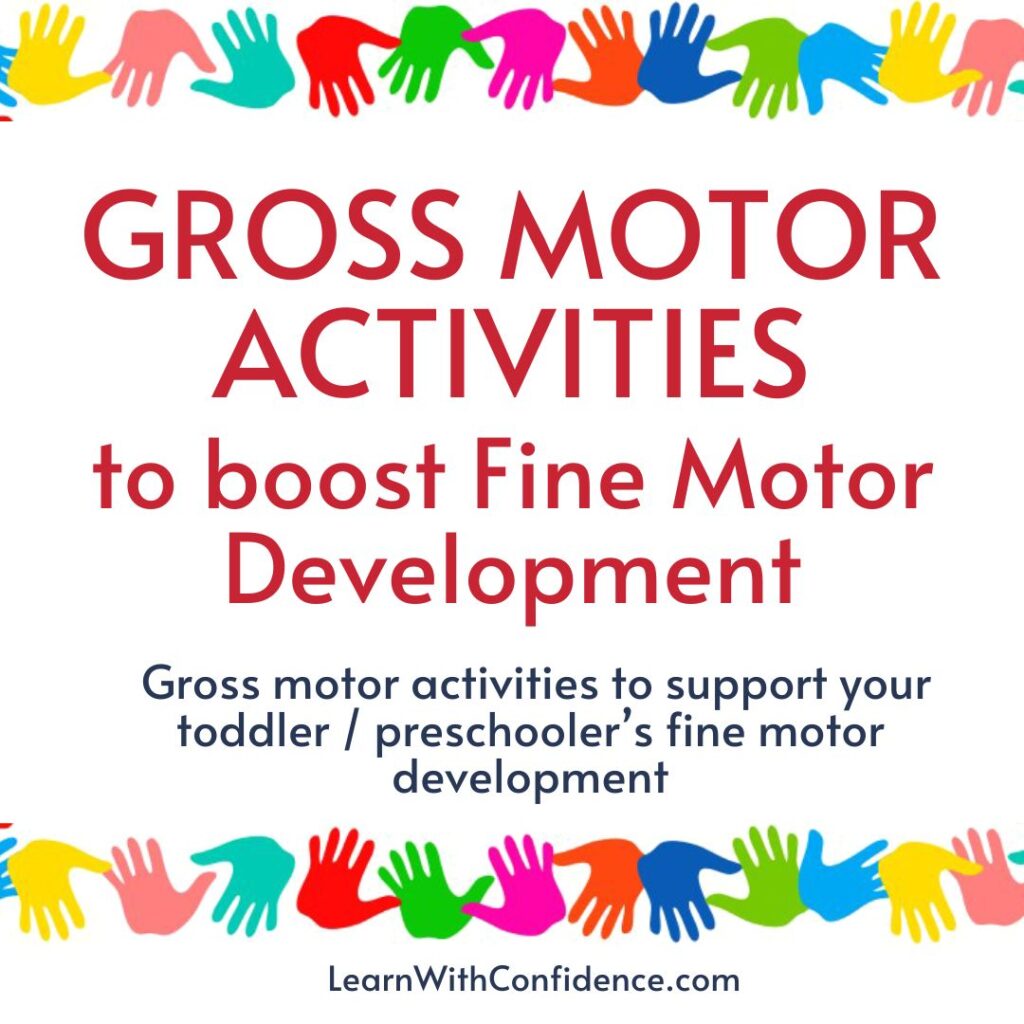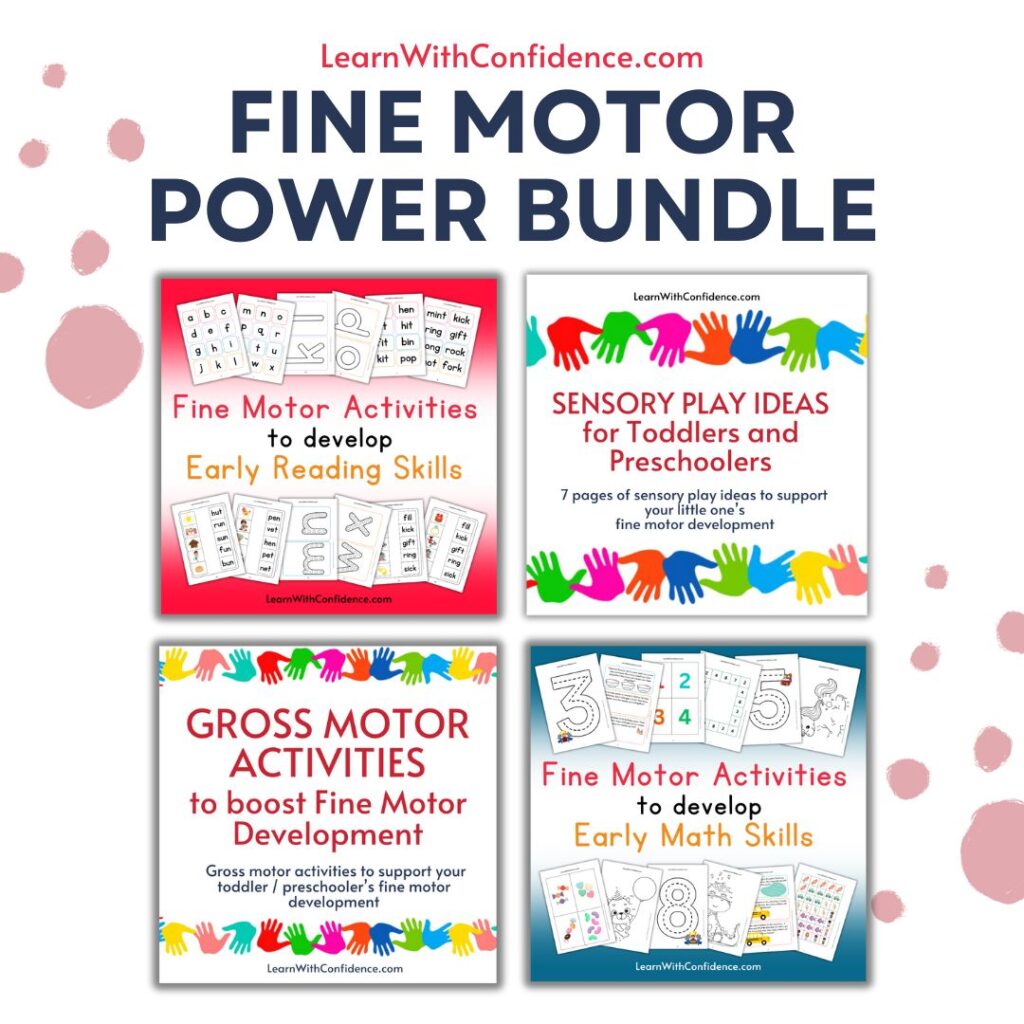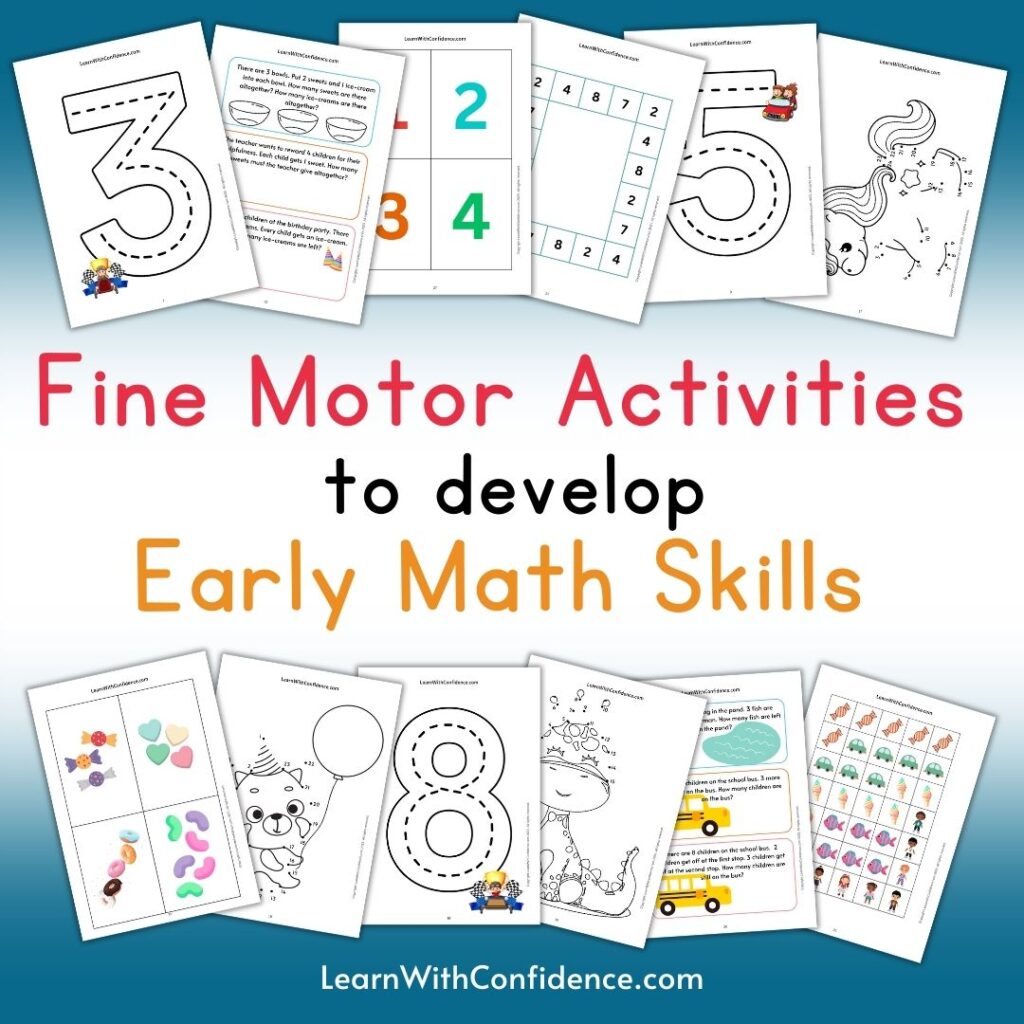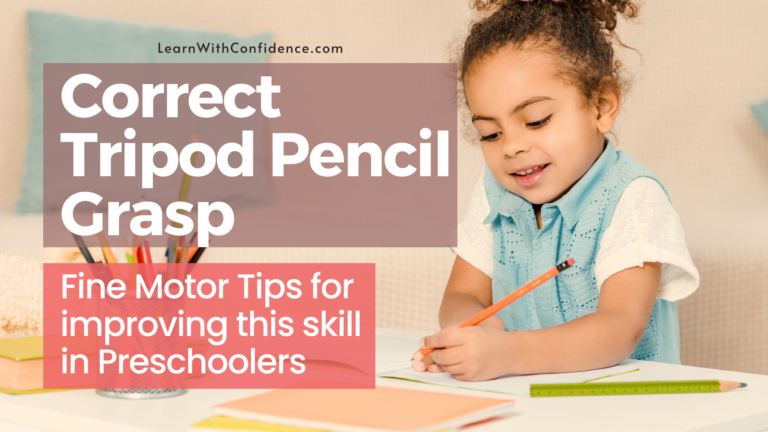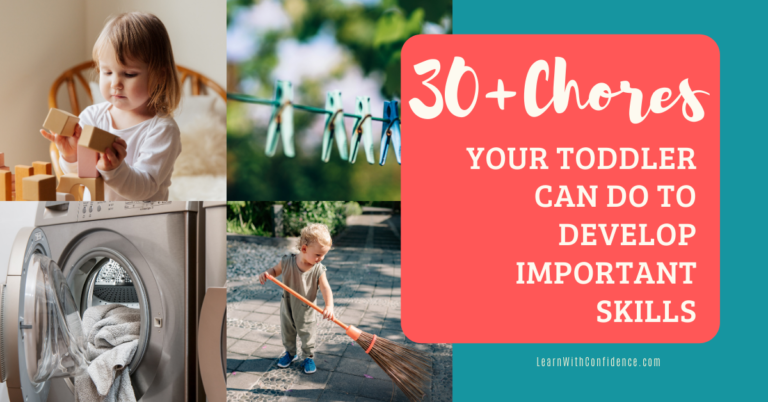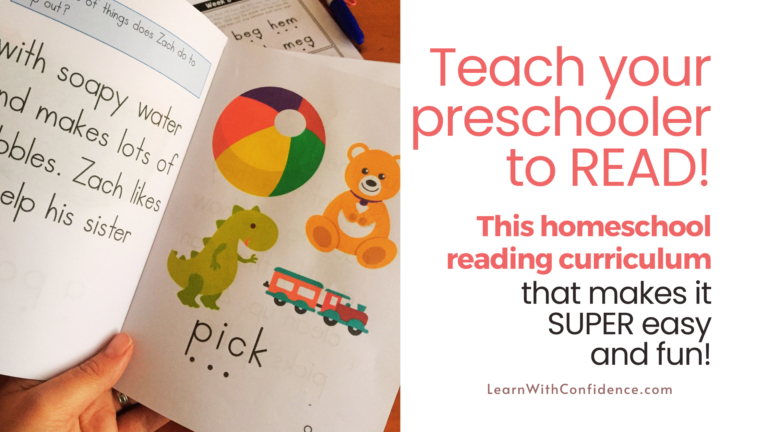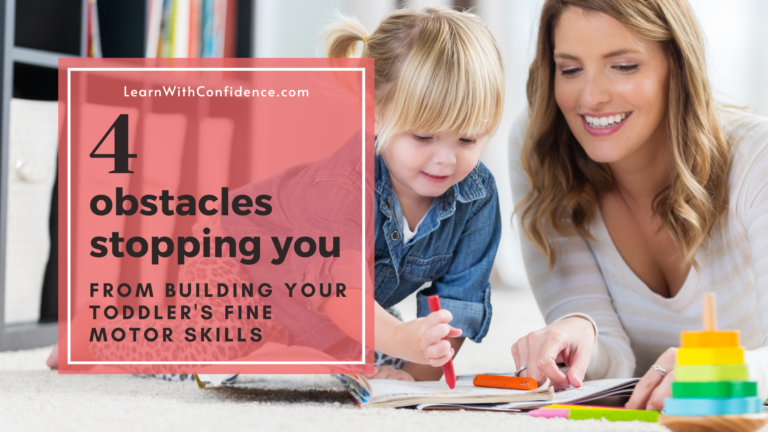35+ ways to develop your child’s fine motor skills that you probably never thought of
Developing your child’s fine motor skills doesn’t have to be difficult. Here are 35+ ways that your child is developing their fine motor skills that you probably never thought of and how you can help them improve these skills.
It’s 6am and time to get up!
Get the kiddies out of bed, plop their clothes for the day in front of them. “Quickly get dressed so we’re not late!” They pull on those clothes and zip up their jackets. The littlest flips out as she yanks on her socks and can’t get them to get on her feet. “Come on guys! Time to brush your hair and teeth.”
They saunter into the bathroom and with some help get their hair looking somewhat neat and their teeth clean and fresh. “Pajamas in the laundry basket!”
Finally, they’re in the kitchen and sitting at the table with their bowl of porridge, scooping delicious mouthfuls before its time to dash to school.
In that short (and maybe a bit rushed) getting-ready-time, your child has used their fine motor skills in so many ways!
Sometimes as parents we put so much pressure on ourselves to be doing so many extra things to boost our child’s early development. Meanwhile, they’re developing these already in the little moments of everyday life.
Is your child on track with their fine motor development?

Building your child’s fine motor skills can be easy
But when I talk about “building your child’s fine motor skills”, you might feel the hairs at the back of your neck begin to rise.
Building your child’s fine motor skills DOES NOT have to be difficult!
If you’re worried you don’t know what to do. Or what kind of activities are best suited to your toddler or preschooler. If you feel completely incompetent and incapable of helping your child learn and master these skills. I want to put your mind at ease! Don’t let that stop you from prioritizing this part of their development.
Your child is using their hands already for so many tasks. With the proper guidance and the right cues and reminders, you can use every activity they do in their everyday life as an opportunity to build those skills.
Two bits of advice for developing your child’s fine motor skills.
Before I tell you how to use every day activities to build your child’s fine motor skills, I want to highlight two things when it comes to building the strength and coordination of your fine motor muscles.
1) Remind your child to use their fingertips rather than their whole hand or finger. It will be tough for them at first, but that’s the position their hand and wrist will thrive in when they learn and master their correct pencil grip and other tasks.
2) We’re developing neural pathways. These take time, and repetition. Correcting your child’s pencil grip, for example, in a kind and uplifting (maybe even fun or funny) way is going to help them learn how to position their hand correctly and over time this will just become natural and comfortable to them.
And just like getting good at a sport or hobby takes time to condition the right muscles and learn how to use them in an effective way, fine motor development is exactly the same. But never fear, the everyday activities we’re about to discuss are a perfect way to do this!
Use these 4 everyday activities to build your child’s fine motor skills
Here are 4 areas of life where you can use these everyday activities to boost your child’s fine motor skills development.
Use dressing to build your child’s fine motor skills
If you have a tiny toddler, they’re probably only starting to learn how to dress themselves. Oh yes – they believe they already can and won’t even want your help. But you and I both know better, right! If your child’s a little older, they may be competent at slipping on their pants or their shoes. Velcro straps are manageable but putting on or taking off a shirt is still pretty tough. (This is where my 2 year old is right now.) And finally, as they grow into preschoolers, they can pretty much dress themselves head to toes. Some things are still tough like zipping up zippers, tying shoelaces or buttoning up a jersey.
But how have they progressively mastered these tasks? By slowly developing the strength and coordination in the muscles of their little hands to be able to do some of these tasks.
Here’s a list of everyday dressing activities that need good fine motor development:
- Pulling clothes on
- Putting on shoes or socks
- Securing Velcro straps
- Tying shoelaces
- Buttoning up a jersey
- Zipping up a jacket or pants
- Tucking in a shirt
- Putting on a belt
Next time your child is dressing, or you’re helping them get those stubby little arms into the sleeves, be aware of how much they’re using their finger and hands to manipulate the clothes they’re wearing.
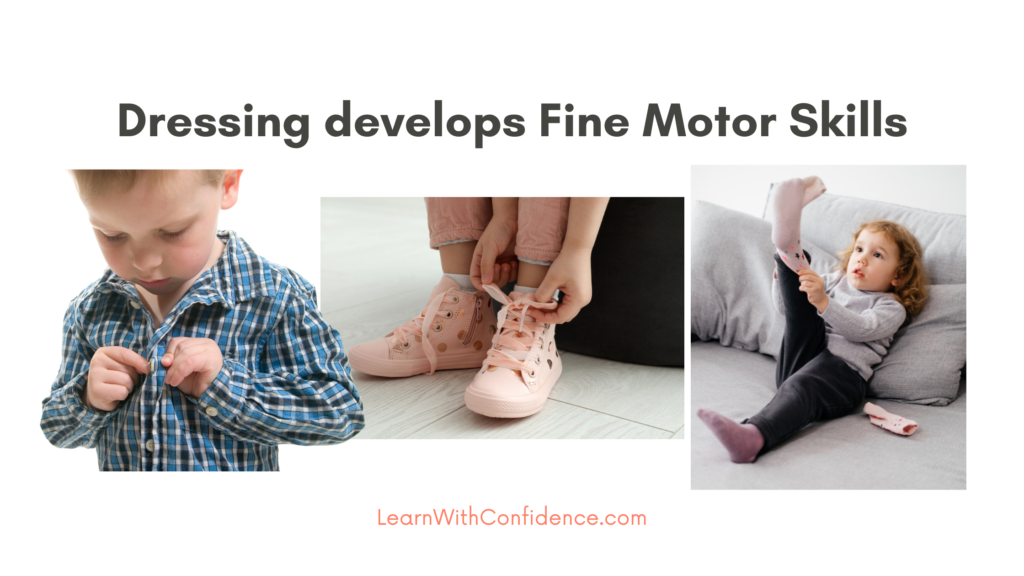
Use feeding to build your child’s fine motor skills
Your toddler has been working on this skill since they were a very small baby. Remember when they were lying on the mat doing tummy-time and they reached their tiny little hand out and picked up that little random object and brought it towards their mouth.
And then later when they first started exploring solid food with their hands, learning just how much pressure to use to pick something up without squishing it. How to hold it and bring it to their mouth and take a bite. When they use utensils like a a spoon or fork, they have to have the strength and coordination of their dominant hand to manipulate the utensil as well as using their non-dominant hand to support the bowl or plate.
Here are examples of everyday feeding activities that can improve your child’s fine motor skills
- Eating finger foods – picking them up off the plate, moving them towards the mouth and getting them in their successfully
- Using a spoon to feed themselves, stir their porridge, scoop something from one bowl to another
- Poking a fork through some soft pieces of food
- Using the helping hand to hold the bowl while using the strong hand to scoop.
- Feeding someone else (like a baby sister or brother)
When they’re doing these activities, remind them to hold their spoon with the correct grip and use their helping hand to hold the bowl. As they improve their hand-eye coordination and fine motor strength they will find it so much easier (and less messy!)

Use personal care to build your child’s fine motor skills
And speaking of messy! Personal care is a wonderful opportunity to not only teach our children to take care of themselves but also to develop their fine motor skills.
The activities you’ll see listed here depend on your child’s ability to use an object in their hands and plan and perceive how to move that object in their little hands. And often without being able to see where it is and if it’s doing its job! A good example is brushing their hair! They have to hold the hair brush with enough strength, and at the right angle, to effectively brush through their hair. Then they have to coordinate where their hand is going as it brushes all the hair on their head. It’s a mammoth task!
(Brushing your hair will never be the same again!)
Here are some examples of opportunities to use personal care to develop your child’s fine motor skills:
- Hair brushing
- Teeth brushing
- Washing their face
- Washing their body
- Using the toilet and wiping properly
- Washing their hands
- Putting on lotion
- Painting their nails (or yours if you’re brave enough!)
- Putting on ‘make up’ (mine love to pretend they’re putting on blush or eye shadow with my brushes!)
Remember to help your child build confidence by encouraging them to try these things themselves and to persevere when it gets tough. Help them hold the brush in the right place. Guide them about how to use their sponge to wash themselves from top to toes.

Use chores to build your child’s fine motor skills
And if you’re interested in boosting your child’s confidence and independence, chores are a wonderful way to do that. I know, Mama, it’s just SO much easier to do it yourself – it’ll get done quicker and better that way. But it’s really important to let them take some responsibility for taking care of their home and environment too!
In addition, you get the bonus of their fine motor development because so many of these tasks require the use of their little hands. Think about these examples and how much you use the muscles in your hands for them:
- Putting clothes into the laundry hamper, washing machine or dryer.
- Hanging up on a clothes-horse or (low enough) wash line
- Pegging items onto a wash line
- Hanging up clothes on hangers
- Wiping up messes with a cloth or paper-towel
- Sweeping
- Scooping/sweeping the dirt onto a dustpan
- Washing or drying dishes
Your toddler or preschooler will probably be able to complete most of these chores, depending on their age of course. But even if they’re little and they do it all wrong, keep encouraging them! And as you supervise them, guide their little hands to use their finger tips, hold things in the right place and use their non-dominant (helping) hand as well.

Use hobbies to build your child’s fine motor skills
The final area we can use as an opportunity to develop our child’s fine motor skills is in the hobbies they do. Hobbies are an important way to expose our children to new possibilities, to use their gifts and talents in new ways and to give them experiences out of the everyday stuff they’re used to.
Many hobbies have an element of fine motor control that’s needed to excel in them. And while your child discovers something new and fun, that they really enjoy doing, they can also boost their fine motor skills.
Here are some ideas of hobbies that your child might enjoy that can also develop their fine motor skills:
- Crafts – this includes coloring, cutting, sticking, writing, drawing, scrapbooking, and so much more.
- Gardening – whether they’re pulling out weeds or poking little holes in the soil to plant new seeds, they’re using their hands and fingers and building that strength.
- Painting – maybe its an artwork, maybe its a wall, maybe they’re using a paintbrush or maybe a roller. Either way, they’re building the muscles in their hands, fingers and wrists and having fun doing it.
- Building things – include them in your DIY projects
- Sewing
- Knitting
- Cake decorating – for tiny people it might be adding the sprinkles, for older kids it might be fondant cake toppers
And there are many many more hobbies your child has yet to discover!
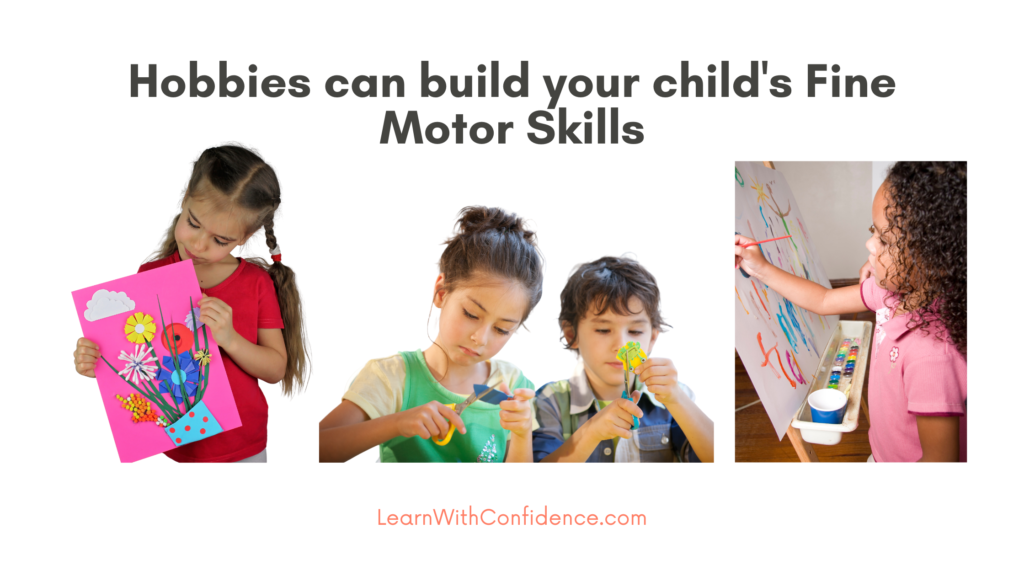
Fine motor skills are important
Your child will use their fine motor skills for more than just writing and cutting with scissors. Developing these skills will help them in many different areas of their everyday life and even open doors of opportunity for them to explore new hobbies and talents.
And if this skills set is mastered, it really does set your child up for success in school. Why? Because it makes the tasks done in school SO much easier! And when your child finds something easy and is successful when they do it, their confidence grows. Confident kids are more successful kids.
Easy, fun activities to build your child’s fine motor skills?
You can find a bunch of Fine Motor resources here in our shop!

